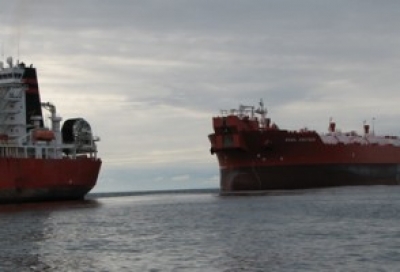Ship finance 101: MLPs can’t build vessels and pay distributions?

NYSE-listed KNOT Offshore Partners (KNOP), a Master Limited Partnership (MLP) - which specialises in shuttle tankers, hosted an investor day last week in New York, which explained a lot about the contradictions of the structure.
Following the model prevalent across the larger energy transport spectrum, the MLP is actually a spin-off from an established parent entity, in this case, Knutsen NYK Offshore Tankers (“KNOT”)- which, as the General Partner, owns 33% of the MLP. As its executives explained in their slides, the strengths of the partnership stem from a mix of advanced vessels on long charters to highly credit-worthy oil majors; its rise to prominence in the 1980’s was intertwined with the growth of Statoil, and oil production in the burgeoning North Sea fields.
Today, the partnership owns 10 shuttle tankers, all on long-term charters, in the North Sea, with charters to Statoil, ENI and ExxonMobil, and also offshore Brazil with units on to TransPetro (but also to Shell and Repsol.
Waiting in the wings, potentially, are five additional vessels - one on the water, and four newbuilds- presently owned by the parent. “Dropdowns” as transfers from parent to daughter companies are called, can be “accretive” to distributable cash flows if they are done when the timing is right for all concerned.
Unlike peers in the MLP space, KNOP’s market performance in 2016 has been positive, albeit highly volatile. This performance is even more remarkable considering the death spirals that have dragged down many MLPs, a preponderance of which earn their revenues from transporting energy- usually crude oil, refined products, or natural gas. KNOP has not only maintained its distribution quarterly payments, similar to a dividend, to investors- now $0.52 per unit, giving an annualized yield of more than 14%, based on recent prices above $15.00 per unit.
Probably the closest peer, among listed partnerships, is Teekay Offshore Partners (TOO), which has been hammered directly by the rout facing the sector. In December, 2015 it announced a reduction in its quarterly distributions, from $0.70 per unit, down to $0.14 perunit- based on a need to “conserve our internally generated cash flows to fund future growth projects and reduce our debt levels.” It subsequently announced a distribution of $0.11/unit, paid in mid February.
Why the differences? After all, TOO, certainly a first-class outfit, also operates complex equipment on multi-year charters with investment grade entities. An easy answer lies in the realm of capital deployment.
Noted shipping wags have opined that “you can either build vessels or pay out distributions- but it’s hard to do both.” Indeed- at the extreme, one partnership where original charters have now run off, Navios Maritime Partners (NMP) in the dry bulk arena, has cut its distributions completely in a cash conservation move, prompting analyst Jon Chappell from ISI Evercore to assert that: “An MLP Without a Distribution is Not An MLP.”
Unlike KNOP, TOO was actually funding capital intensive projects – notably the life extending upgrade of an FPSO, after having acquired it from the parent, soon to go on a five-year charter in offshore Brazil. The upgrade, with a headline price of $253m, would entail risks not suitable for its parent, which had re-invented itself as a financial holding company. TOO’s risks were in stark contrast to the more boring and less bodacious routine of “dropping down” an asset already on the water, or about to be, with a charter in place from the parent to the daughter company.
From its recent results and strong prognosis, KNOP is happily still a viable MLP - with a yield that may be more than commensurate with the associated risk.
HEADLINES
- Do shipping markets want Biden or Trump for the win?
- All 18 crew safe after fire on Japanese-owned tanker off Singapore
- Singapore launching $44m co-investment initiative for maritime tech start-ups
- Cosco debuts Global Shipping Industry Chain Cooperation Initiative
- US warns of more shipping sanctions
- China continues seaport consolidation as Dalian offer goes unconditional